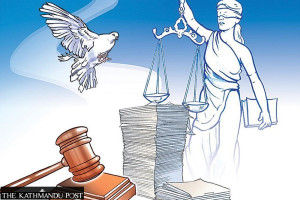Money
Satellite city plan likely to be passed by March
The government’s plan to build a satellite city on the fringes of the Kathmandu Valley is likely to be endorsed by the Kathmandu Valley Physical Development Committee by mid-March.
Sanjeev Giri
The government’s plan to build a satellite city on the fringes of the Kathmandu Valley is likely to be endorsed by the Kathmandu Valley Physical Development Committee by mid-March.
After the committee, which is chaired by Urban Development Minister Arjun Narasingha KC, gives the go-ahead, the scheme will be sent to the Cabinet for formal ratification.
The government has been mulling to declare a number of places in Kathmandu, Lalitpur and Bhaktapur districts as satellite cities in a bid to better manage and ease congestion in the Capital by luring residents to move to the outskirts.
A satellite city or town is an idea in urban planning that refers to an area located near major cities or metropolitan areas. “We are planning to identify four spots and develop them as satellite cities. Once the committee endorses the plan, we will call for letters of interest to prepare a detailed project report (DPR),” said Bhai Kaji Tiwari, chief executive officer of the Kathmandu Valley Develo-pment Authority (KVDA).
The DPR will determine the location and exact size of the land that can be developed into a satellite city. According to Tiwari, they are thinking about the outskirts of Gundu, Balkot, Dadikot, Duwakot, Changu Narayan, Bhainsepati and Saibu as potential sites.
Four ministers and nine secretaries from the relevant ministries also sit on the committee. The budget for the current fiscal year has allocated Rs150 million to prepare a land use plan for the purpose of constructing satellite cities in the Kathmandu Valley within five years.
The KVDA said that the inclusion of almost all the related line agencies at the central and local levels will make it easier to proceed with the plan if the government gives a clear mandate for the development of satellite cities.
According to Keshav Neupane, information officer at the KVDA, the government is planning to construct a satellite city on 100,000 ropanis of land near the Manohara River on the way to Sankhu.
The government will adopt a land-pooling mechanism for the construction of public infrastructure including roads and open spaces equivalent to 5 percent of the total area.
“The government will not buy land, but pool the required space for infrastructure development by paying compensation to the landowners,” said Neupane. Around 5 percent of the land will be used to develop infrastructure.
Likewise, a satellite city will be built in Lalitpur in the second phase which will be spread over 10,000 ropanis.
The KVDA has planned to develop the satellite city in Kathmandu as a model, and replicate it in other major cities across the country.
The city will have modern amenities with well managed schemes for drinking water, electricity, sewage, hospitals, schools and government offices.
“This is the first of its kind concept in Nepal, and we are working hard to ensure that the city succeeds in catering to the needs of people living in a city like Kathmandu,” Neupane said.
Follow Giri @sanjeev1974ad




 8.12°C Kathmandu
8.12°C Kathmandu














